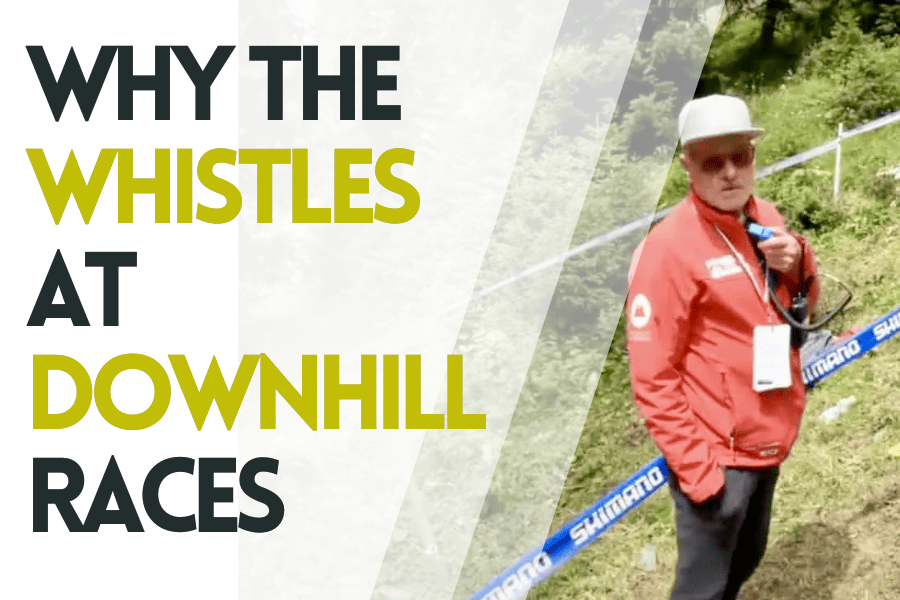Those whistles you hear at the UCI World Cup Downhill Mountain Bike races aren’t from fans cheering. They are a safety measure the race marshals use during all practice sessions and the race.
Key Takeaways
The race marshals on the side of the race track blow their whistles for each rider going past them. This short, loud audio signal helps with:
Even without direct visual cues, whistles make it possible to gauge where riders are, which is sometimes impossible to do otherwise amidst trees and bushes or solid rock faces.
Here’s a POV shot by Bernard Kerr stopping in a spot with limited visibility:
So there you have it: They are not there to scare away wild bears on track. Let’s explain all reasons in detail:
#1 Helping to re-enter the track safely
One very important function of the whistles is often not even seen by the public. It’s during all the practice sessions before the actual race at the end of the weekend.
During practice, there is no starting order and no mandatory intervals between riders. And rider field isn’t cut down by qualifying yet – that means double or more riders on track than on race day.
Riders can stop at any point on the track to rest, look at possible line options, watch other riders go through certain sections and try to learn the fastest lines.
This means riders are coming down the hill constantly. Some are even walking up and down near the tape. It’s always common mountain bike trail etiquette to not stand on track and not drop in before oncoming traffic.
And the sound of whistles above helps with gauging if and when someone is coming down.
#2 Alerting spectators
Similarly, a whistle further up notifies the next marshal in line and the crowd next to them of oncoming riders. With the speed, which these racers are going, added to the vegetation and terrain it can be hard to spot riders coming down and to get out of the way in time.
Even though race tracks are taped off, it’s common that roads and walking paths cross the race course on the way down the mountain.
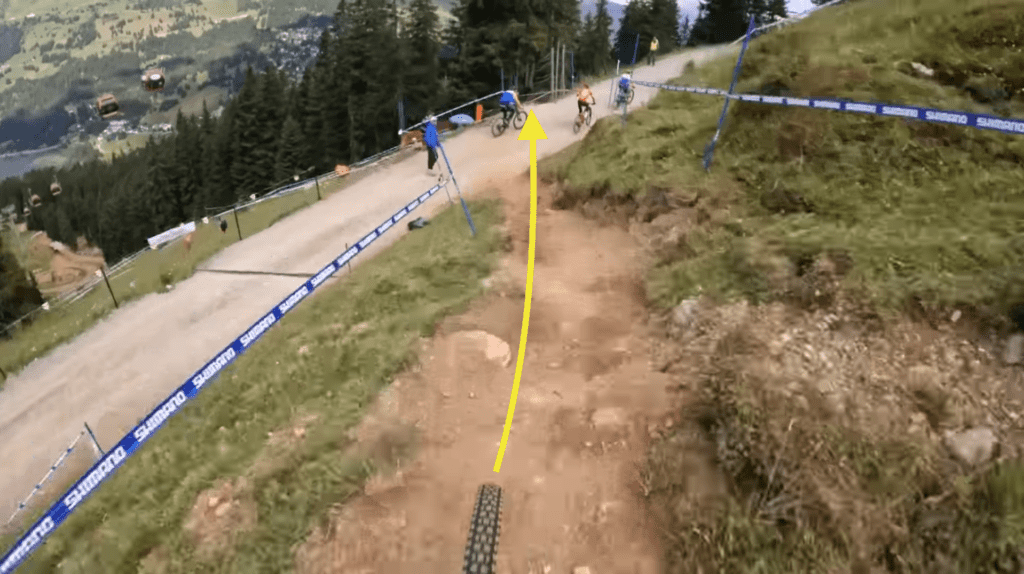
Specific parts are dedicated for foot traffic to cross the track with course marshals placed next to these crossings regulating access and keeping things safe.
#3 Locating crashed riders
Quickly and reliably pinpointing the location of downed riders is crucial, especially during qualifying, timed training, and race runs when riders are actually expected to do a full top-to-bottom run without stopping trackside.
Marshals are located in direct line of sight of the next, wherever possible. At least they are within audible range, even with trees in between them. This allows them to locate riders that have passed the previous marshal, indicated by the blast of a whistle, but not the following one.
Marshals can gauge how many riders are coming by the whistle blows of the marshal further up.
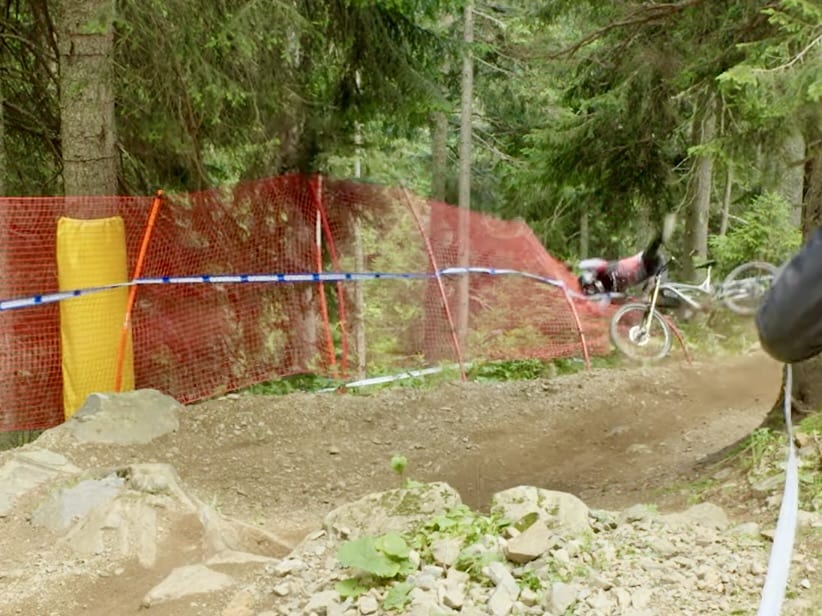
#4 Signaling oncoming riders from behind to let by
There are a couple of reasons why riders might get caught from behind by faster riders.
Especially during practice, the situation is more chaotic with riders still figuring out track conditions and their lines.
Mountain bikes don’t have rearview mirrors or loud engines. It’s very difficult to hear bikes behind you.
The loud whistles are practically impossible to miss, even more so when going off right behind you. When you hear two whistle blows, chances are you are being followed.
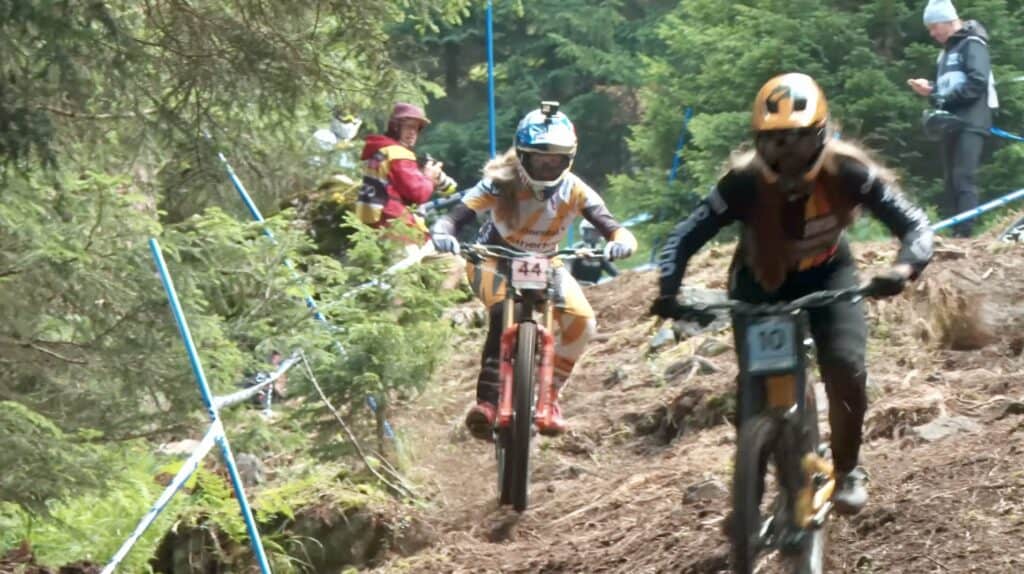
#5 Alternative race start signal
Usually, the start of an MTB race is signaled by a starting pistol in a mass start or start lights for individual starting gates.
If none of those is available or working, as a backup a whistle can also be used to give the starting signal. It doesn’t happen often, but in case electronics don’t play along, a good old-fashioned manual whistle can do the job just fine.
